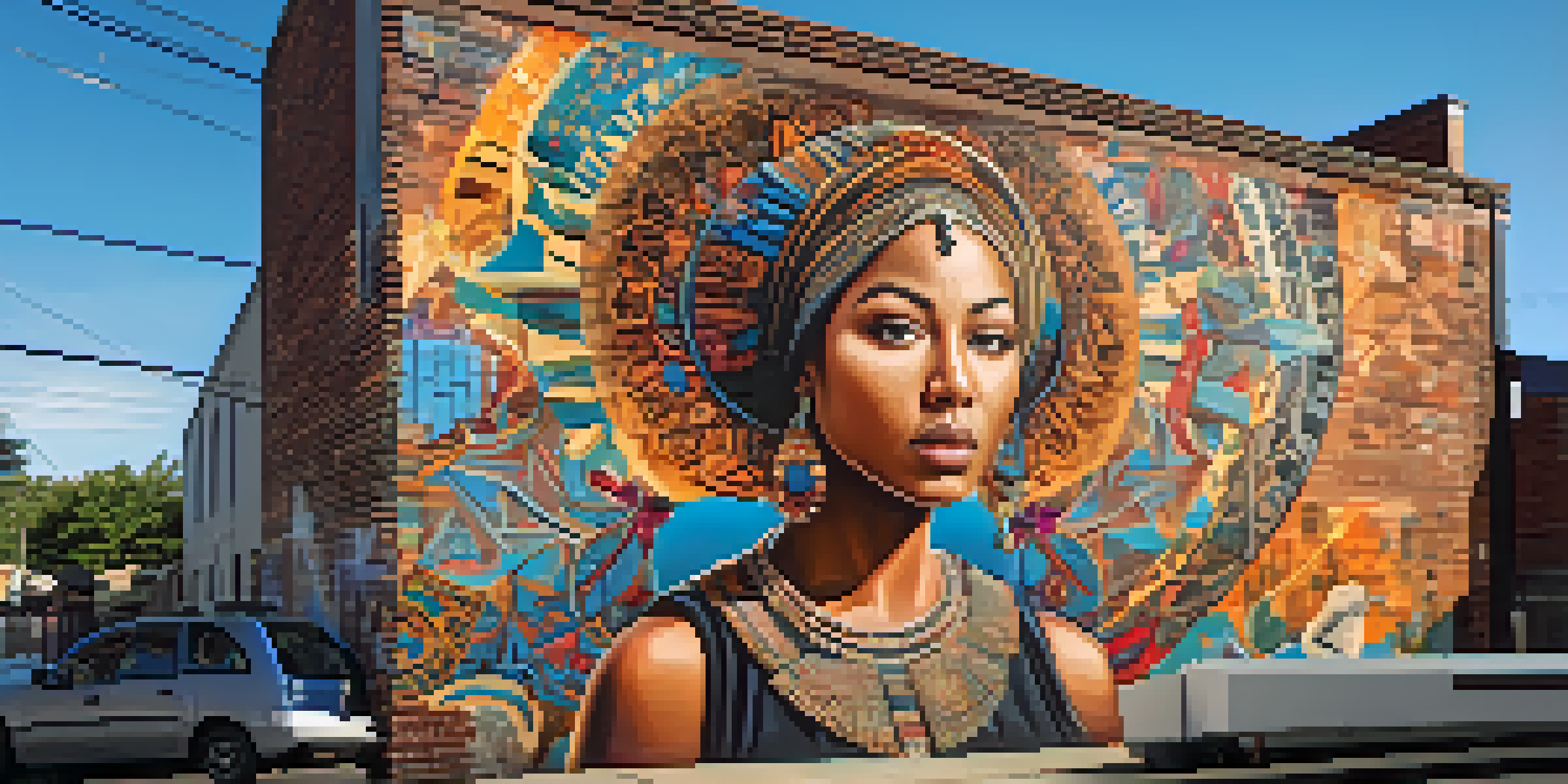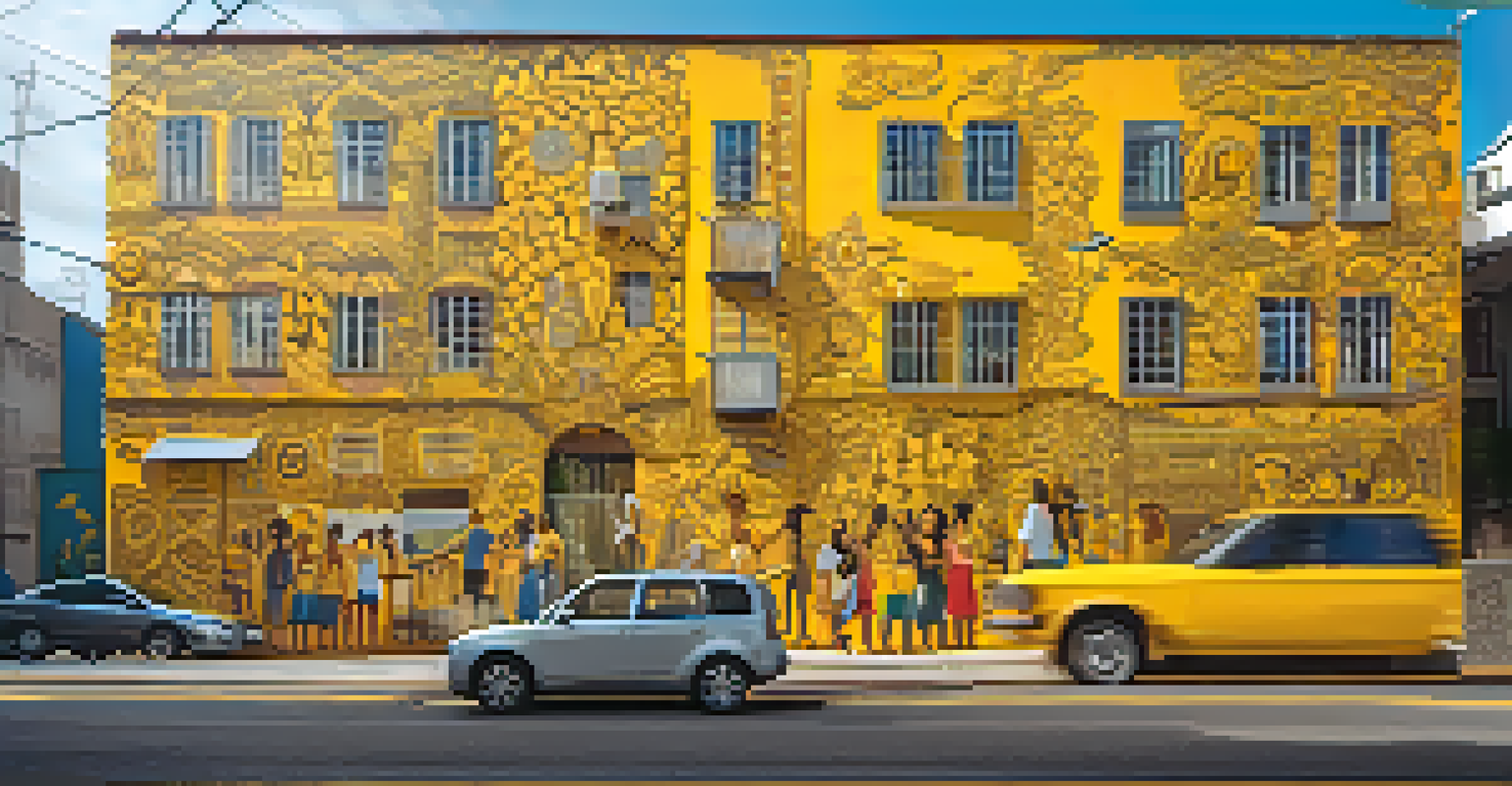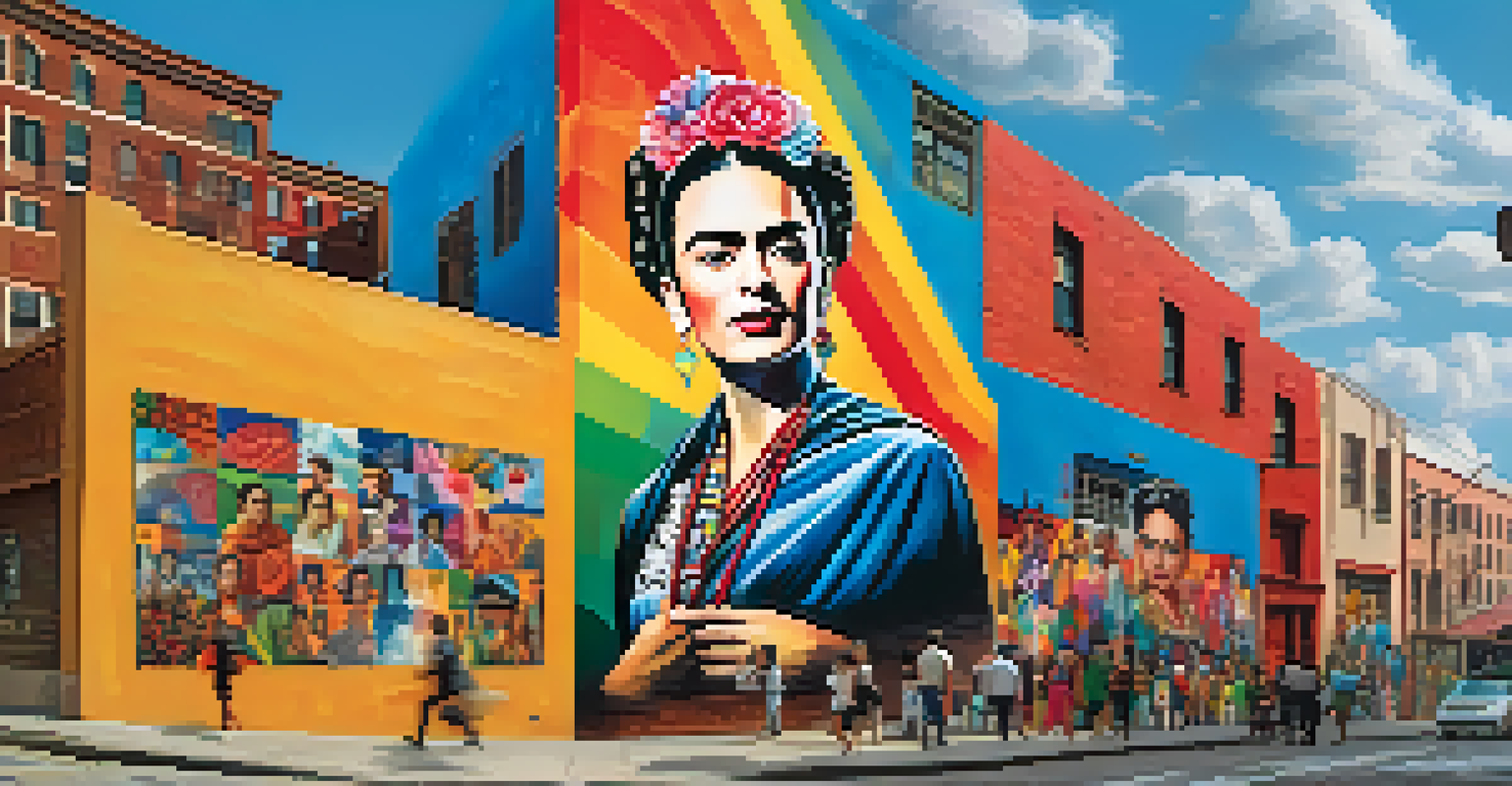Famous Brazilian Street Artists: Icons of Urban Expression

The Rise of Street Art in Brazil: A Cultural Revolution
Brazilian street art has exploded in popularity over the last few decades, transforming urban landscapes into vibrant galleries. This movement began as a form of rebellion against traditional art forms, allowing artists to express their creativity freely in public spaces. With roots in social and political commentary, street art has become a crucial part of Brazil's cultural identity.
Art is the most beautiful of all lies.
The diverse backgrounds of Brazilian artists have enriched this art form, blending local culture with global influences. From São Paulo to Rio de Janeiro, murals often address pressing social issues, using color and imagery to provoke thought and inspire change. This cultural revolution has not only changed the streets but also how art is perceived in society.
As street art continues to evolve, it serves as a voice for marginalized communities, highlighting their struggles and dreams. The movement has gained international attention, with artists from Brazil being recognized worldwide for their powerful works. This intersection of art and activism is what makes Brazilian street art truly distinctive.
Os Gêmeos: Twin Brothers Who Paint the World
Os Gêmeos, or 'The Twins', are perhaps the most famous street artists from Brazil, known for their whimsical, large-scale murals. Identical twins Otavio and Gustavo Pandolfo have been captivating audiences with their unique style that combines elements of Brazilian folklore and dreamlike imagery. Their work often features yellow-skinned characters that tell stories about their heritage and personal experiences.

Their artistic journey began in the streets of São Paulo, where they honed their skills through graffiti and urban art. Over the years, Os Gêmeos have expanded their reach beyond Brazil, showcasing their work in galleries and exhibitions around the globe. Despite their international fame, they remain deeply connected to their roots, often incorporating local themes into their pieces.
Street Art as Cultural Expression
Brazilian street art reflects the nation's cultural identity, addressing social issues and giving a voice to marginalized communities.
What sets Os Gêmeos apart is their ability to blend the whimsical with the profound, inviting viewers into a world of imagination while also addressing serious themes. Their murals are not just visually striking; they also spark conversations about identity, culture, and social issues. This duality is what makes their work resonate with so many people.
Eduardo Kobra: Master of Color and Perspective
Eduardo Kobra is renowned for his vibrant murals that often feature historical figures and cultural icons. His work showcases a unique blend of photorealism and geometric patterns, creating stunning visual experiences that captivate onlookers. Kobra's murals can be found in cities around the world, but his heart remains in Brazil, where he frequently draws inspiration from local culture.
The artist is not a special kind of person; rather, each person is a special kind of artist.
One of Kobra's signature techniques is his use of color, which he employs to evoke emotion and highlight the significance of his subjects. His mural of the iconic artist Frida Kahlo in São Paulo is a prime example, bursting with color and energy that reflects Kahlo's passionate spirit. Kobra's ability to transform blank walls into impressive canvases has earned him acclaim both as an artist and an ambassador for urban art.
Beyond aesthetics, Kobra often incorporates messages of peace and social justice into his work. He believes in the power of art to inspire change and raise awareness about important issues. This commitment to meaningful expression makes Kobra a significant figure in the world of street art.
Maya: The Female Voice in Street Art
In a predominantly male-dominated field, Maya stands out as a powerful female voice within the Brazilian street art scene. Her work often explores themes of femininity, empowerment, and social justice, challenging stereotypes and promoting equality. Maya’s murals are characterized by bold colors and intricate patterns that reflect her unique perspective as a woman and an artist.
Maya began her artistic journey in the streets, using her art as a form of resistance and a way to connect with her community. Her pieces often feature strong female figures, illustrating stories of resilience and strength. By bringing women's experiences to the forefront, she highlights the importance of representation in the art world.
Prominent Artists Shaping the Scene
Artists like Os Gêmeos, Eduardo Kobra, and Maya exemplify the diverse styles and themes that characterize Brazilian street art.
Maya’s work not only beautifies urban spaces but also serves as a platform for dialogue about gender issues. She actively engages with her audience through workshops and community projects, empowering others to express themselves through art. This dedication to fostering creativity makes Maya an inspiring figure in Brazilian street art.
Blu: An Italian Artist Making Waves in Brazil
Blu, though originally from Italy, has left a significant mark on the Brazilian street art scene with his large-scale murals and thought-provoking imagery. Known for his distinctive animation style, Blu often tackles themes of politics, consumerism, and environmental issues in his work. His murals are characterized by their surreal quality, often featuring whimsical creatures that invite viewers to reflect on the deeper meanings behind them.
Blu's most famous work in Brazil includes a mural in São Paulo that critiques the destructive impact of consumer culture. This piece, like many of his others, encourages viewers to question societal norms and consider their role in the world. His ability to blend humor with serious commentary makes his art both accessible and impactful.
Despite being an outsider, Blu has embraced Brazilian culture and collaborated with local artists, creating a unique fusion of styles. His contributions to the street art movement in Brazil showcase the power of art as a universal language that transcends borders. Through his work, Blu continues to inspire dialogue and provoke thought on critical issues.
Cameron: The Storyteller of Urban Narratives
Cameron is a Brazilian street artist known for his narrative-driven murals that tell the stories of everyday life. His work often features characters and scenes that reflect the struggles and joys of urban living, resonating deeply with the local community. Cameron believes that art should be a reflection of society, and his murals capture the essence of Brazilian culture and life.
With a background in illustration, Cameron combines various techniques to create dynamic scenes that draw the viewer in. His murals not only beautify the streets but also serve as a commentary on social issues, making his work both visually compelling and meaningful. Each piece is like a snapshot of life, inviting viewers to pause and reflect on the stories being told.
Future of Street Art in Brazil
Emerging talents are revitalizing the movement, blending traditional and contemporary techniques to influence global art dialogues.
Cameron's dedication to storytelling through art has earned him recognition and respect within the street art community. He often collaborates with local residents, incorporating their stories into his work, which fosters a sense of connection and belonging. This community engagement is what makes Cameron an essential figure in the narrative of Brazilian street art.
The Future of Brazilian Street Art: Emerging Talents
As the street art movement in Brazil continues to grow, new talents are emerging, bringing fresh perspectives to urban expression. Young artists are experimenting with different styles and mediums, pushing the boundaries of what street art can be. This influx of creativity is revitalizing urban spaces and inspiring a new generation of art enthusiasts.
Many of these emerging artists draw inspiration from the rich cultural heritage of Brazil, blending traditional techniques with contemporary themes. This fusion not only honors the past but also opens up dialogues about the future of art in society. The vibrant energy of Brazil's streets serves as a canvas for their innovative ideas and expressions.

The future of Brazilian street art looks bright, with a strong emphasis on community engagement and social issues. As these new voices gain recognition, they are likely to influence the global street art scene, showcasing the power of art as a tool for change. The evolution of this movement is a testament to the resilience and creativity of Brazil's artistic community.